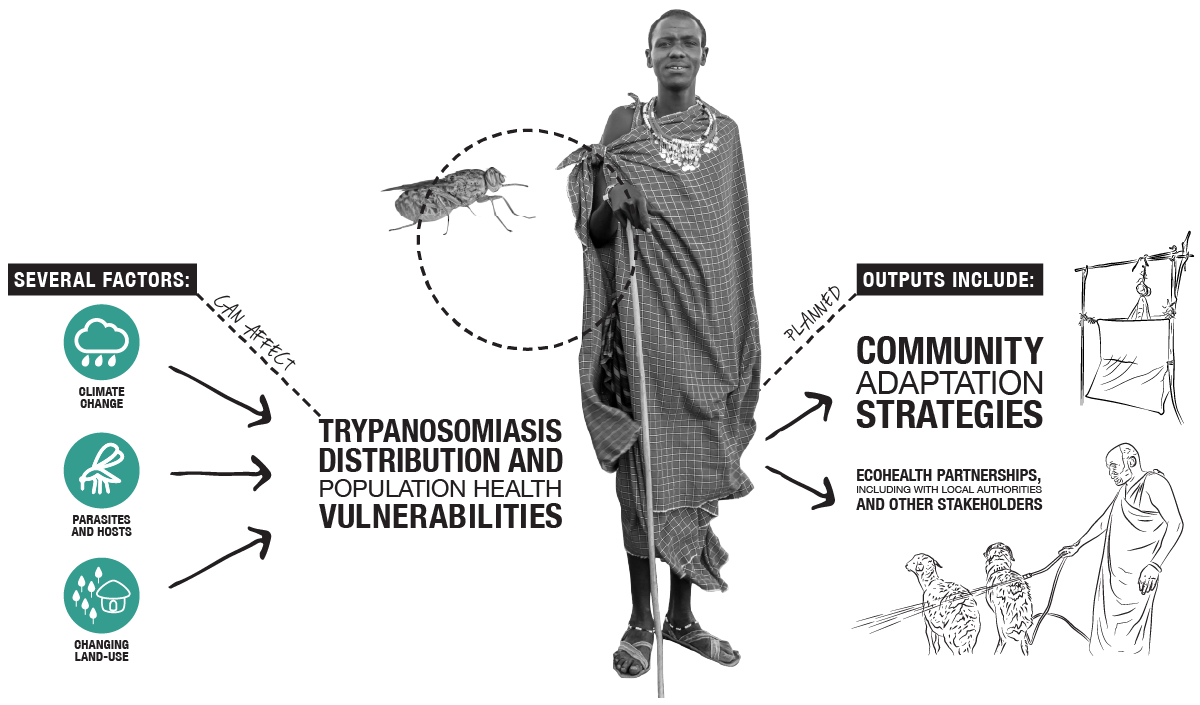
The pastoralists of the Maasai Steppe are vulnerable to trypanosomiasis. This vulnerability is shaped by their exposure to infected vectors as well as a number or other social and environmental factors. Land use and climate change have forced the Maasai people to alter their lifestyle. They often have had to become either non-nomadic or to move their livestock into areas where they are more exposed to infectious tsetse flies. Land use changes and climate change are therefore increasing the Maasai’s vulnerability to trypanosomiasis.
This project seeks to understand how various environmental factors, including climate and land cover, influence current tsetse and trypanosomiasis distribution. This knowledge will be combined with predictions for climate change and land cover to highlight where future hotspots of infection are likely to occur. The project is also working with local communities to ascertain their knowledge of trypanosomiasis. It will also look at their adaptation methods both to the disease and to climate variability.